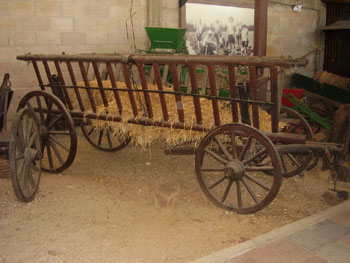the article below from haaretz describes a typical learning encounter (and also gives a great background discussion on bina and the secular yeshiva in the rest of the article).
eleven bareheaded students (male and female) are sitting crowded around ari elon, drinking in his lecture. elon is 'the son of' and 'the brother of.' his father, menachem elon, was the vice president of the supreme court; his brothers are the prominent national religious rabbi motti elon and the head of the national union faction, mk benny elon. ari elon may have taken off his skullcap as a teenager, but the family charisma is still there.
"the whole preoccupation of israeli society with trivia, like what's the capital city of some country, is irrelevant," he explains to the students in his weekly gemara class. "the gemara is a totally different model. not a model of questions and answers, but of dilemmas and taking things apart. there's no 'phone friend' to ring for help, that's only on 'who wants to be a millionaire?' here there are kushiyot, difficult problems, as in the word mokesh ('mine'). you have to dismantle them. you can't just read the text, you have to wear yourself out."
in today's lesson, elon is teaching about an issue in tractate bava kama. his style is loose and associative, and he's brimming with all kinds of ideas. before long, he has moved from the text to the story of the life of rabbi yohanan: "rabbi yohanan's father died the moment rabbi yohanan was formed in his mother's womb. his mother died the moment she gave birth to him. in other words, both left this world the second they ceased being relevant to bringing him into the world. they concluded their role as far as he was concerned. he had 10 sons and they, too, all died during his lifetime. when the last son died, he took one of his bones and kept it with him. whenever anyone came to him to lament his troubles - my wages were cut, my tooth hurts - he showed them the bone and told them his story. rabbi yohanan is the job of the talmud. wherever he goes, there is death."
the students are mesmerized. elon goes on to talk about the encounter between rabbi yohanan and rabbi kahana, in which the former received a lesson in humility: "rabbi yohanan was condescending to others, and in the course of a very long process he learned that he is not always the teacher. the culmination of the story comes when he is able to call someone else rabbi and to call himself a student. this is the remedy for everything, his success in diminishing himself before someone else. we have to search for the rabbi yohanan in us."
the lesson ends, but the students remain in the classroom, continuing to discuss rabbi yohanan and how he connects with them. "there's something here that I can't quite explain," tal wolfson, a 23-year-old tel avivian, tells me. "i'm drawn to these texts. i feel like they belong to me and i belong to them more than to any greek mythology, for example. i took courses in judaism at university, too, but there the perspective was entirely academic and informative. here it's different."
.jpg)






